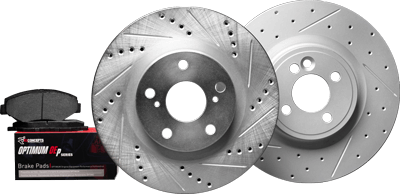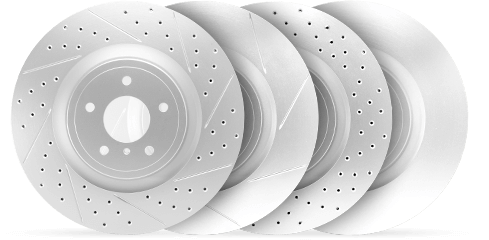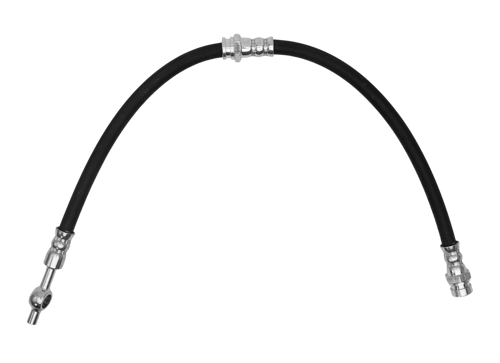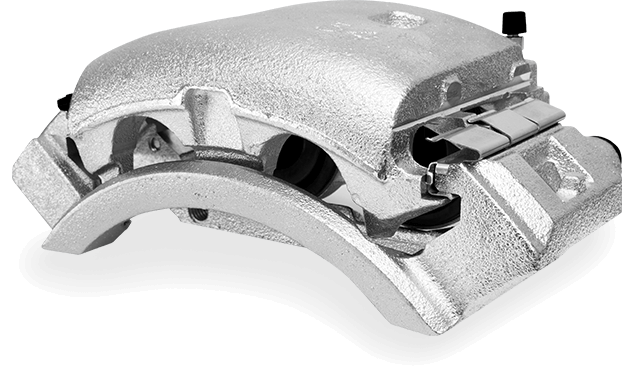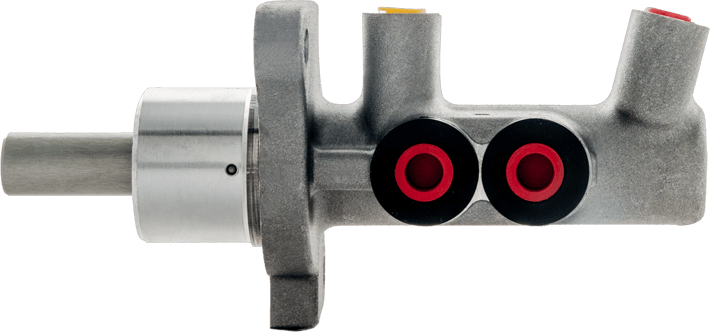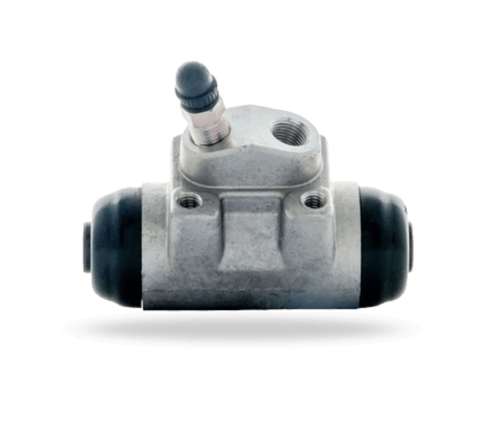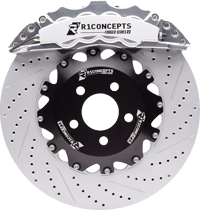Are you wondering how to make your brakes last longer? It’s simpler than you might think – strategic driving, regular servicing, and the right components play pivotal roles. We’ll guide you through manageable steps that minimize brake wear and maximize longevity – all without needing expert-level car knowledge.
Key Takeaways
- Adapting one’s driving style, such as planning stops, maintaining safe distances, and avoiding aggressive driving behaviors, can significantly decrease brake wear and extend the lifespan of the brake system.
- Investing in high-quality brake components, including ceramic or NAO brake pads and premium rotors, is critical for enhanced performance and longevity of your vehicle’s braking system.
- Regular maintenance, such as scheduled brake inspections, changing brake fluid, and incorporating engine braking techniques, is essential to ensure optimal performance and durability of brakes.
Work With Your Driving Styles

Modifying your driving style can noticeably lessen brake wear. Here are some tips to make your brakes last longer:
- Plan ahead and anticipate stops to avoid sudden braking
- Maintain a safe following distance to allow for gradual braking
- Avoid aggressive driving behaviors such as hard braking
By adopting a smoother driving technique, you can brake smoothly, reduce the strain on your vehicle’s braking system, and make your brake pads last longer, extending the lifespan of your brake system.
The Role of Driving Environment
The driving environment considerably influences the deterioration of your brakes. Some factors to consider include:
- Hilly roads, which require more frequent brake use, leading to greater wear
- Wet or snowy conditions, which can cause additional wear on brake pads
- Abrasive road conditions with sand, dust, or gravel, which can also lead to increased wear
- Bumpy roads with potholes, which can put additional strain on your brakes
It’s important to be aware of these factors and take appropriate measures to maintain your brakes.
How Vehicle Load Affects Brakes
Another crucial determinant of brake wear is the vehicle load. Brakes wear out faster when there is excessive weight placed on them, leading to increased stress and reducing their lifespan..
Regularly cleaning out unnecessary items from your vehicle can decrease the burden on brakes, promoting a more efficient stopping process.
Mastering the Art of Smooth Braking
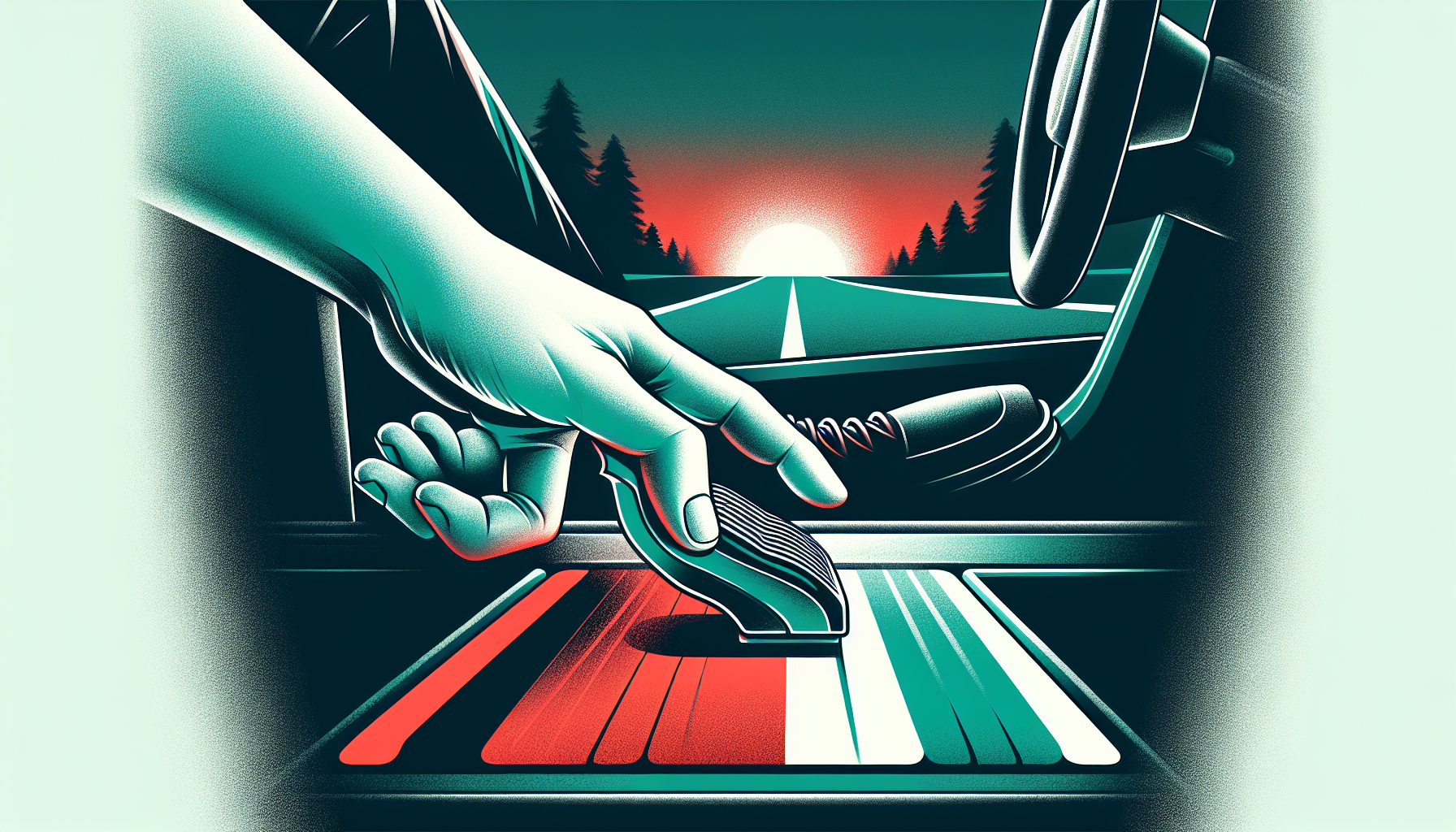
Smooth braking is a vital aspect of brake maintenance. It involves applying brakes gently and evenly, which can significantly extend the life of your brake pads. Moreover, using the right foot solely for operating the brake and accelerator pedals prevents unnecessary brake pad wear and contributes to smoother transitions between accelerating and braking.
The One-Foot Rule
The one-foot rule refers to a method where a single foot, usually the left foot, is utilized to maneuver both the gas and brake pedals. This practice restricts the chance of simultaneous application of both pedals, which can reduce wear on the braking system.
Timing Your Brakes with the Road Ahead
By foreseeing traffic conditions like red lights and stop signs, you can safeguard brake components from unnecessary heavy braking. To reduce strain on the braking system, avoid patterns of quick acceleration followed by immediate heavy braking.
Adjusting Speed Proactively
High-speed driving exerts more pressure on brake pads, causing them to wear out faster as they labor to halt a fast-moving vehicle. Maintaining appropriate speeds and adjusting to traffic and road conditions can minimize the occurrence of sudden stops, which are hard on brake systems and can affect brake pressure.
Premium Brake Components for Endurance

Investing in superior brake components is a must to ensure the longevity of your brakes. This will ensure better performance and durability for your braking system. High-quality brake pads and components contribute to the longevity and safety of your vehicle’s braking system.
Selecting the Right Brake Pads
Selecting the best brake pads, including front brake pads, is crucial for achieving optimal braking performance and durability. Ceramic brake pads, for example, are known for their excellent stopping power and durability, while Non-asbestos organic (NAO) brake pads are easy to dispose of without polluting.
Importance of High-Quality Rotors
Premium rotors provide better contact with brake pads, improved heat dissipation, and a smoother braking experience. The compatibility between the type of brake pads and the rotor material is crucial for the longevity of brakes.
Regular Brake System Servicing
Routine vehicle’s brake system maintenance is indispensable in avoiding substantial repairs and prolonging brake lifespan. Routine brake inspections should include assessing brake pad life, tire pressure for safe towing, and overall brake system condition to prevent unnecessary strain on the brakes. Scheduling regular brake service can help ensure optimal performance.
Brake Fluid: The Lifeline of Your Brakes
Brake fluid acts as the lifeblood of your brakes. It should ideally be replaced every two to three years or every 45,000 miles, in accordance with the vehicle manufacturer’s recommendations, to maintain optimal condition of the brake system. Checking and replacing your brake fluid regularly ensures the longevity and performance of your brakes.
Adopting Engine Braking Techniques
Engine braking, a method that lessens dependency on the brake pedal, extends the lifespan of brake shoes and pads while enhancing fuel efficiency. It involves slowing down a vehicle by stepping off the accelerator and downshifting gears, effectively lowering engine speed.
Understanding Engine Braking
Engine braking occurs when the driver takes the foot off the accelerator, allowing the car’s transmission to downshift and the drag of the engine to slow the vehicle. Applying engine braking by shifting to a lower gear during downhill drives can aid in controlling the vehicle’s descent and minimize the reliance on traditional braking systems, thus preserving the brake components.
When to Use Engine Braking
Engine braking is most effective when driving downhill, as it helps control the vehicle’s speed. Watching speed and how brakes are applied when traveling downhill can prevent overheating of the brake components and potential brake failure.
Reducing Strain on Your Brakes During Daily Drives
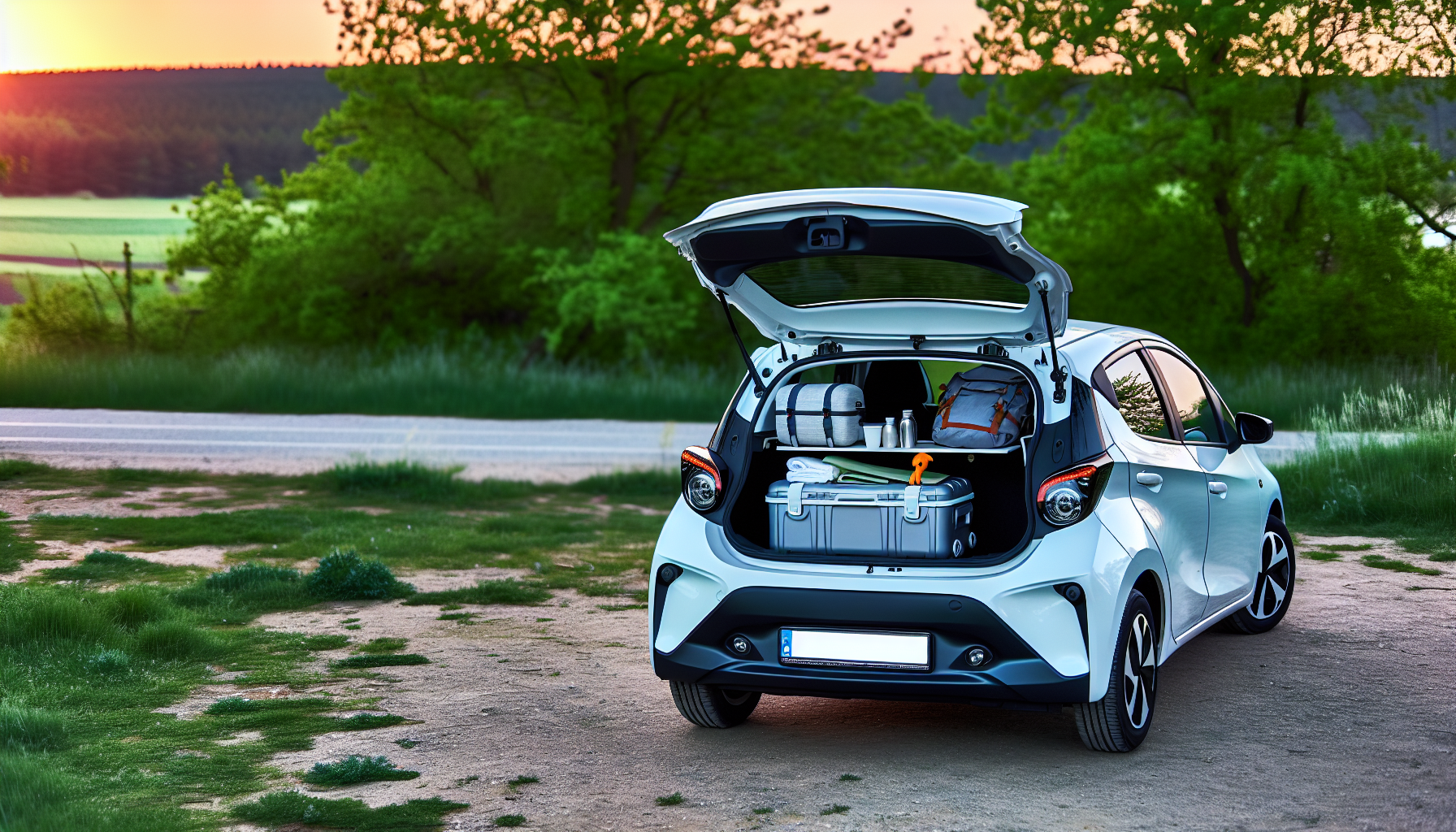
Employing intelligent tactics during everyday drives can help limit brake wear. Techniques such as engine braking, reducing vehicle weight, and navigating traffic wisely help reduce brake pad use and improve fuel efficiency.
Packing Only the Essentials
Reducing the weight in your vehicle or towed by it can alleviate pressure on brake pads and rotors. Driving with excess weight increases momentum and energy expenditure for the brake system, leading to faster wear of the brake pads.
Navigating Traffic Wisely
Keeping enough distance between your vehicle and the one ahead avoids the need for sudden braking and is crucial for preventing premature brake pad wear. Observing the traffic ahead and adjusting speed gradually can also reduce the need to brake harshly, thus reducing wear on brake pads.
Upgrading Your Driving Technique
Refining driving habits through enhanced awareness of surroundings and the adoption of defensive driving can markedly diminish brake wear. Improving observation skills while driving and minimizing distractions are key to becoming a safer driver and prolonging the life of your brakes.
Cultivating Awareness of Surroundings
Improving observation skills while driving by scanning the road from side to side engages peripheral perception, allowing for increased awareness of road conditions and the actions of other drivers.
Minimizing distractions such as mobile phone use, adjusting the radio, or setting a navigation system helps maintain focus on the road, leading to more preemptive and less reactive driving.
Practicing Defensive Driving
Defensive driving entails a close observation of the vicinity and foreseeing potential driving risks, resulting in less frequent and less harsh usage of brakes.
Maintaining a safe distance from the vehicle in front is crucial as it reduces the need for sudden stops and thereby decreases the wear on brakes over time.
Summary
To wrap up, the longevity and performance of your brakes depend on a multitude of factors, including your driving habits, the driving environment, the weight of your vehicle, and the quality of brake components. By adopting smoother braking techniques, using high-quality components, servicing your brakes regularly, employing engine braking, reducing unnecessary vehicle weight, and upgrading your driving technique, you can significantly extend the life of your brakes and improve your driving experience.
Frequently Asked Questions
How can I extend the life of my brakes?
To extend the life of your brakes, invest in quality brake pads, coast before using your brake pedal, lighten your load, avoid heavy or sudden braking, and flush your brake fluid regularly. These steps will help maintain your brakes at their best.
What wears out brakes faster?
Gentle braking minimizes brake wear, while hard braking wears out brake pads faster. Excess heat promotes high wear rates in brake pads. Avoid constant brake application on long downhill drives to reduce brake wear.
How long should brakes last on average?
On average, car brakes should last between 25,000 and 60,000 miles, which translates to about three to six years for most daily drivers. Good habits can help extend their lifespan beyond these estimates.
How does vehicle load affect brakes?
Excessive weight puts additional stress on the brakes, causing them to wear out faster, leading to decreased brake performance and safety.
What is the importance of using high-quality brake components?
Using high-quality brake components is crucial for both the longevity and safety of your vehicle’s braking system. Always opt for reliable and durable brake pads and components to ensure optimal performance and safety on the road.


